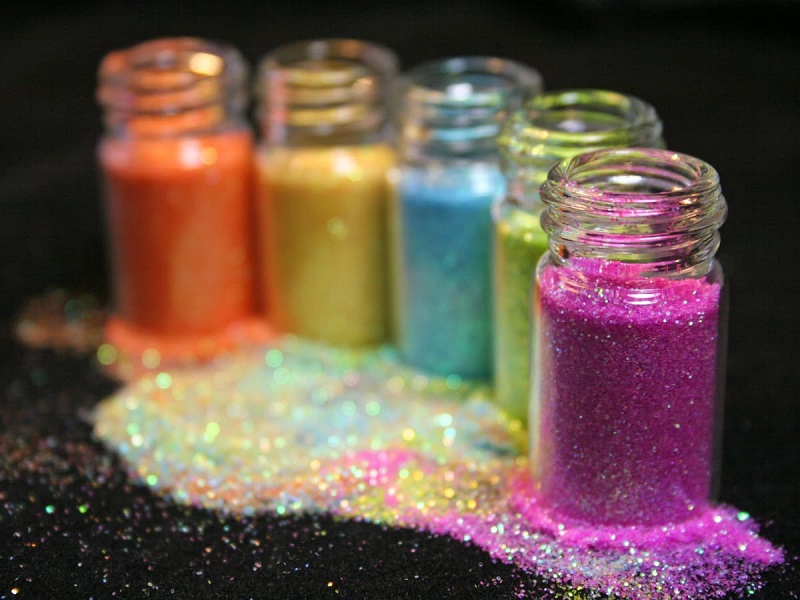
TODAY’S glitter is a combination of plastic and aluminium. Frequently found in well-known makeup products is glitter. Wrapping paper, holiday decorations, greeting cards, craft projects, and even personal cosmetics all contain glitters, which are clingy, scintillating specks. Glitter made of plastic is probably present in almost anything that glitters. Due to their small size, glitter particles are regarded as micro-plastics, a significant contributor to soil, air, and ocean pollution. Studies explains that glitter is notoriously difficult to clean up due to its small size and propensity to produce a lot of static cling. The sparkly stuff in our homes and the surroundings is nearly impossible to eradicate due to its tenacious nature. And because these tiny plastic particles can take hundreds of years to decompose, every piece of glitter ever produced is still in existence. The eye-catching shimmer of a substance like water, glass, or precious metal was referred to as glitter for centuries. The plastic is metalized on both sides by applying ultrafine layers of aluminium, which gives the glitter its colour and bling factor. The plastic is made from sheets of both polyvinyl chloride and polyethylene terephthalate, the same plastic found in water bottles. A third, thin layer of the plastic styrene acrylate is present in many types of glitter. However, secret formulas keep the ingredients used in glitter a secret inside the walls of the factories. The glitter is then removed from the sheets, mostly in the form of tiny, pointy hexagons.Glitter’s tenacity explains its role in plastic pollution. Because most glitter is small from the start, it does not degrade and remains intact from the cradle to the grave. The majority of glitter ends up in the water bodies as a result of wastewater generated in our homes and landfill run-off. Because marine organisms, such as fish, cannot distinguish the tiny synthetic bits from their natural food supply, microplastic has become one of the world’s most prolific and intractable pollutants.As these plastics bioaccumulate in the food chain, humans end up consuming enough plastic to fill a credit card every week, primarily through the water we drink and the sea-food we eat. According to the findings, glitter may play a larger role in microplastic pollution than previously thought, particularly in terms of soil health.so outlaw of glitters is badly needed.
Vijay Kumar
Follow this link to join our WhatsApp group: Join Now
Be Part of Quality Journalism |
Quality journalism takes a lot of time, money and hard work to produce and despite all the hardships we still do it. Our reporters and editors are working overtime in Kashmir and beyond to cover what you care about, break big stories, and expose injustices that can change lives. Today more people are reading Kashmir Observer than ever, but only a handful are paying while advertising revenues are falling fast. |
| ACT NOW |
| MONTHLY | Rs 100 | |
| YEARLY | Rs 1000 | |
| LIFETIME | Rs 10000 | |









